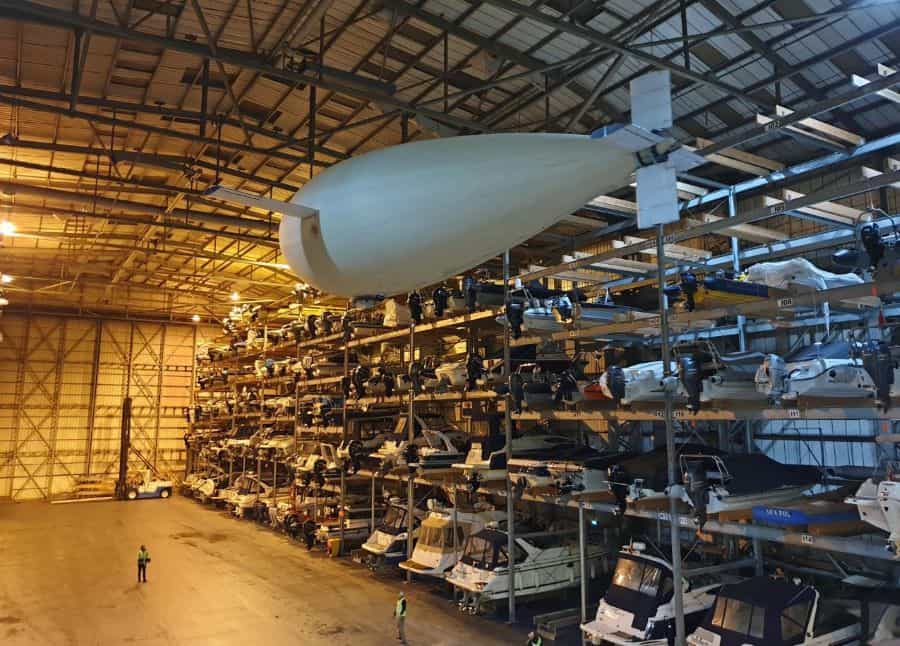Designed to operate at high altitudes for extended periods, the prototype vehicle has a 15m-long fuselage filled with helium and a wingspan of 10.5m. It propels itself using variable buoyancy, constantly shifting its weight to be lighter or heavier than the surrounding air, which creates thrust. This oscillation in weight is achieved by sucking in and compressing air to descend, then releasing that air to increase buoyancy.
“The Phoenix spends half its time as a heavier-than-air aeroplane, the other as a lighter-than-air balloon,” said lead designer Andrew Rae, Professor of Engineering at the University of the Highlands and Islands. “The repeated transition between these states provides the sole source of propulsion.
“The vehicle’s fuselage contains helium to allow it to ascend and also contains an air bag which inhales and compresses air to enable the craft to descend. This motion propels the aeroplane forwards and is assisted by the release of the compressed air through a rear vent.”
A battery fed by solar cells powers the propulsion system, allowing the aircraft to fly autonomously at extreme altitudes for extended periods of time. According to its developers, Phoenix could operate as a pseudo-satellite, launch microsatellites into near-Earth orbits and carry out surveillance mission, ultimately flying as high as 20,000m

“Vehicles based on this technology could be used as pseudo-satellites and would provide a much cheaper option for telecommunication activities,” said Rae. “Current equivalent aeroplanes are very complex and very expensive. By contrast, Phoenix is almost expendable and so provides a user with previously unavailable options.”
The three-year project to get Phoenix to this stage has involved multiple partners across academia and industry, including the Universities of Bristol, Newcastle, Sheffield, Southampton, and the Highlands & Islands, as well as the Manufacturing Technology Centre (MTC) and National Composites Centre (NCC). Having now demonstrated the viability of variable buoyancy as a propulsion system, the team is now hoping to partner with major manufacturers tor the next phase of development.




Nanogenerator consumes CO2 to generate electricity
Whoopee, they've solved how to keep a light on but not a lot else.